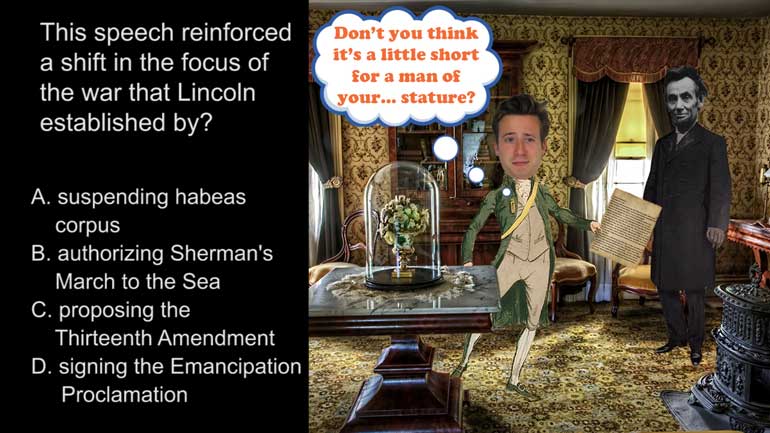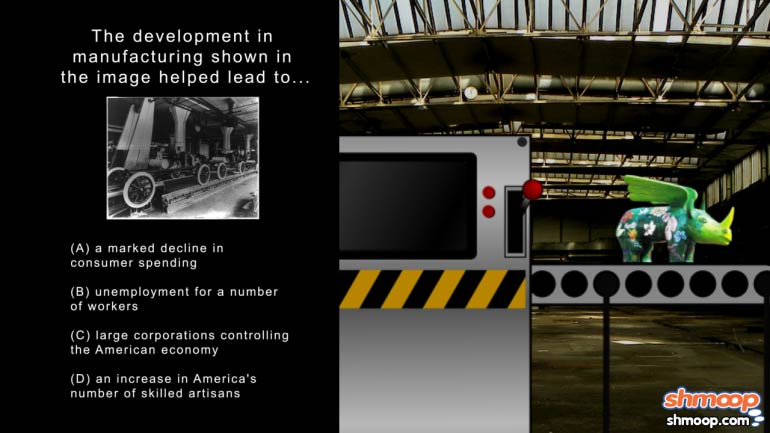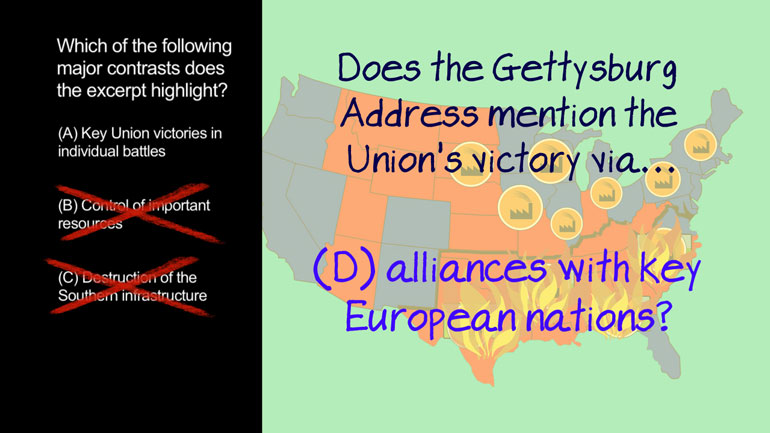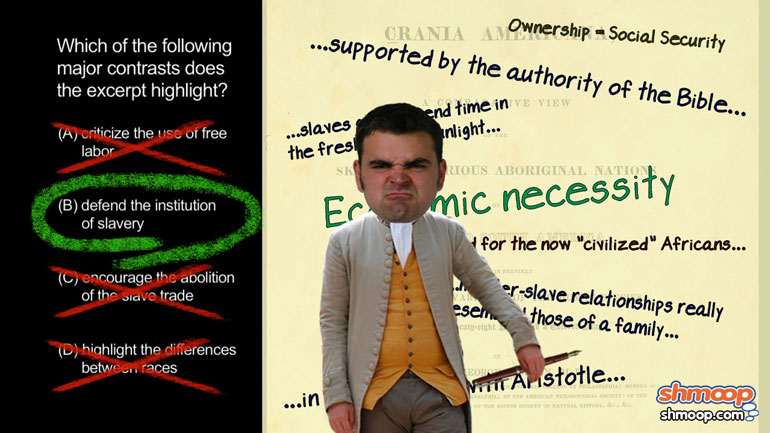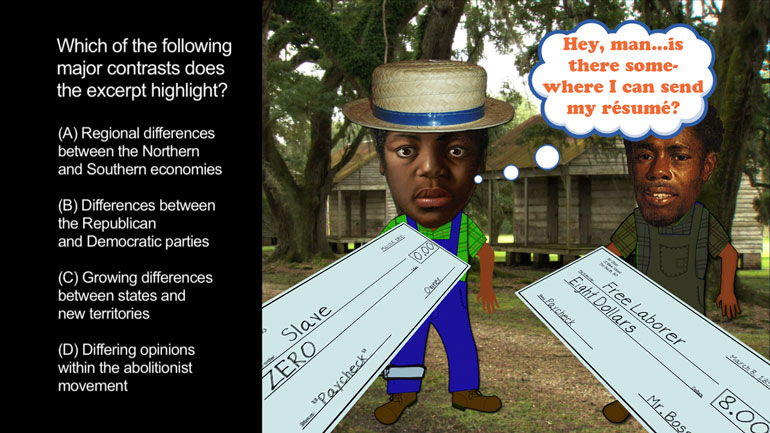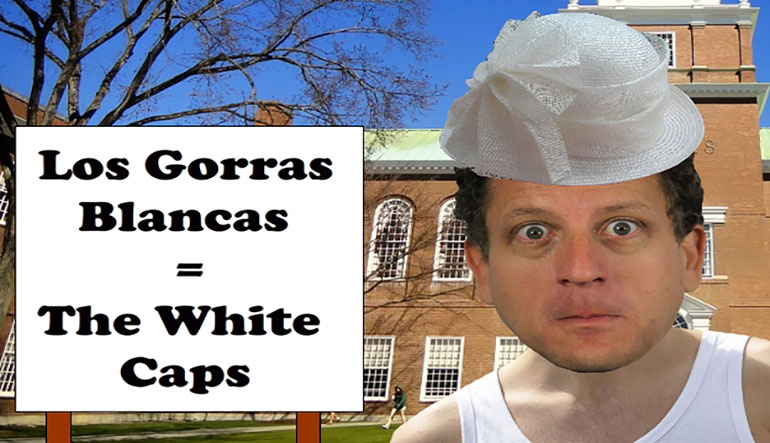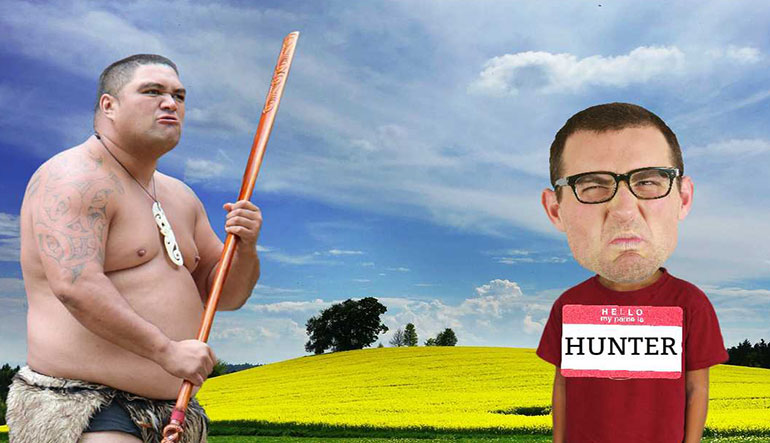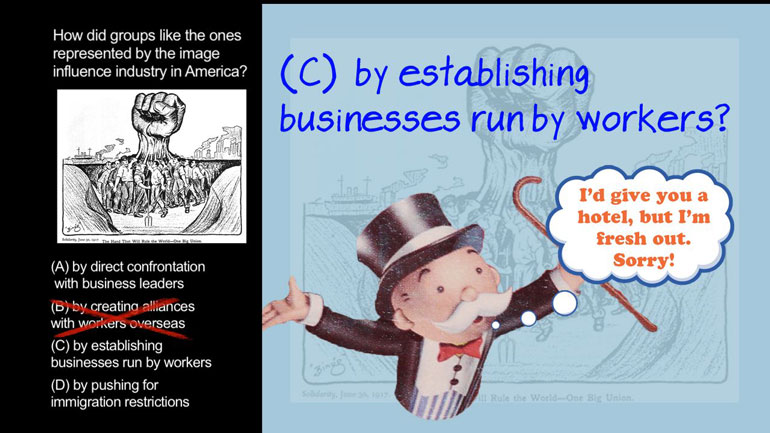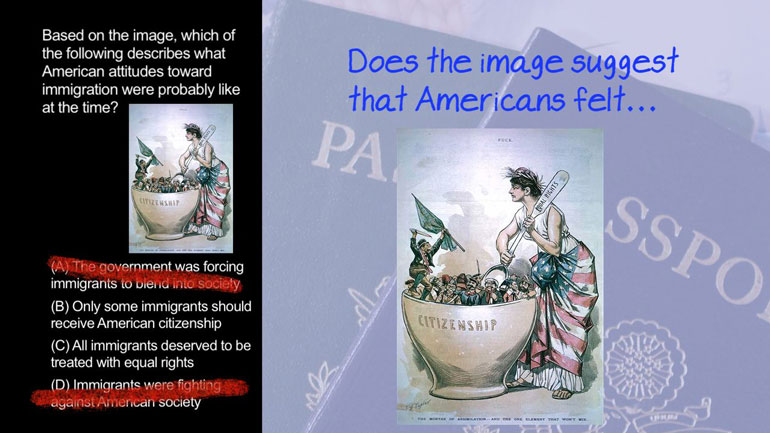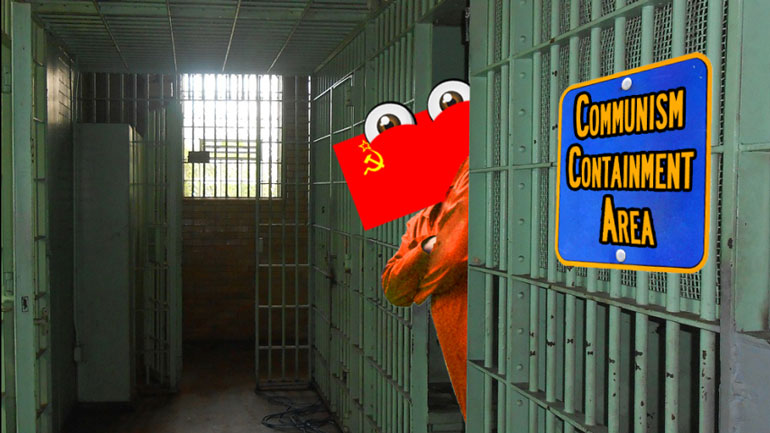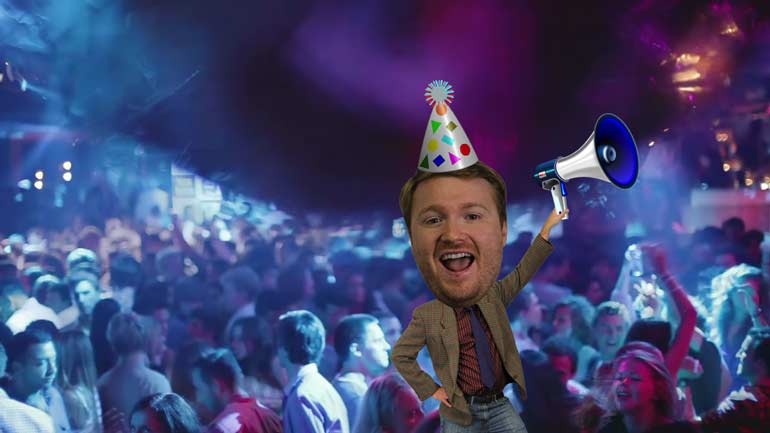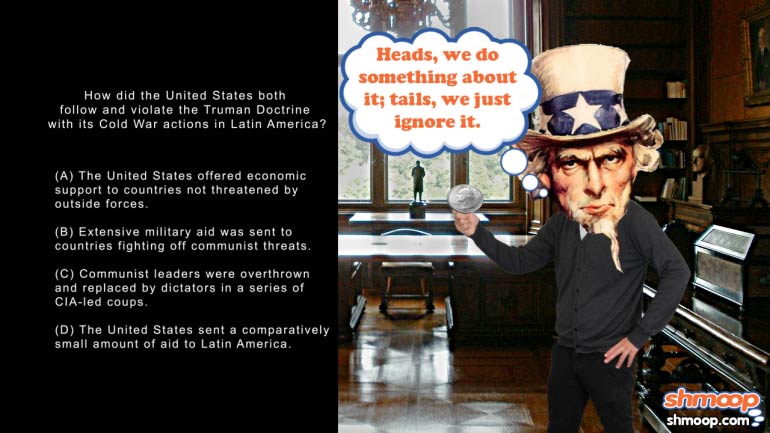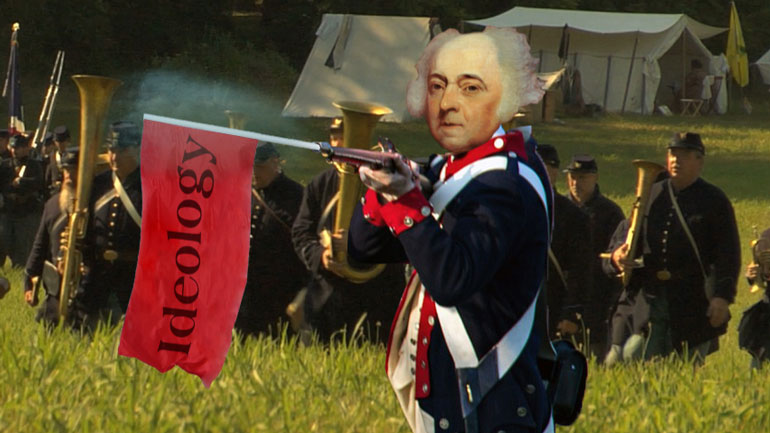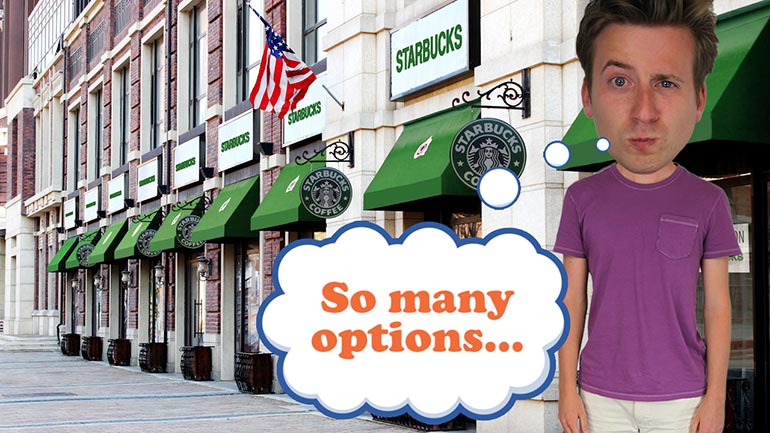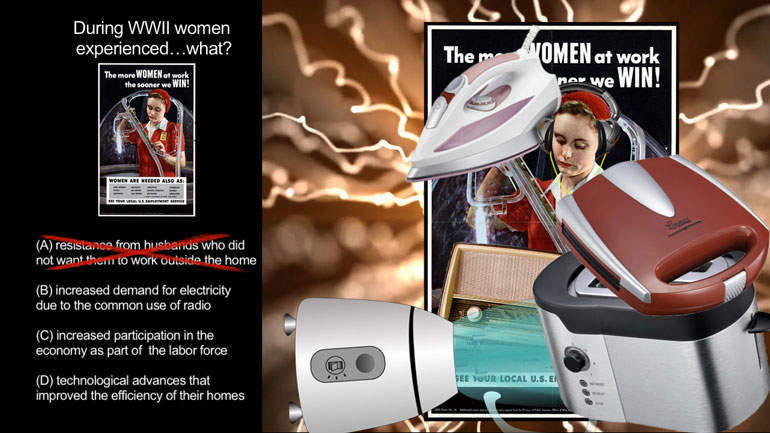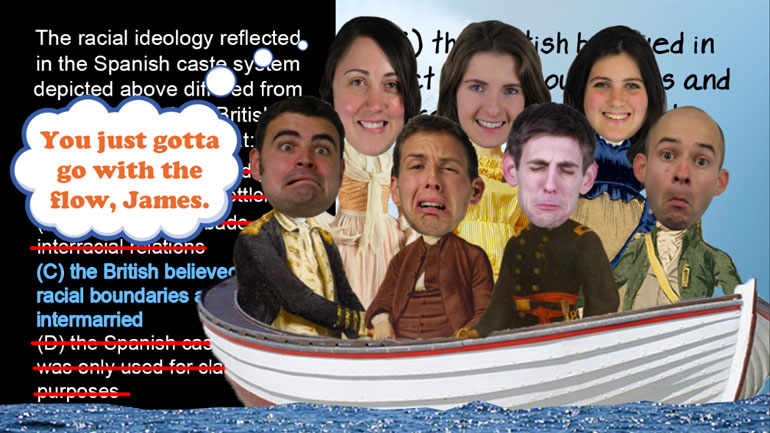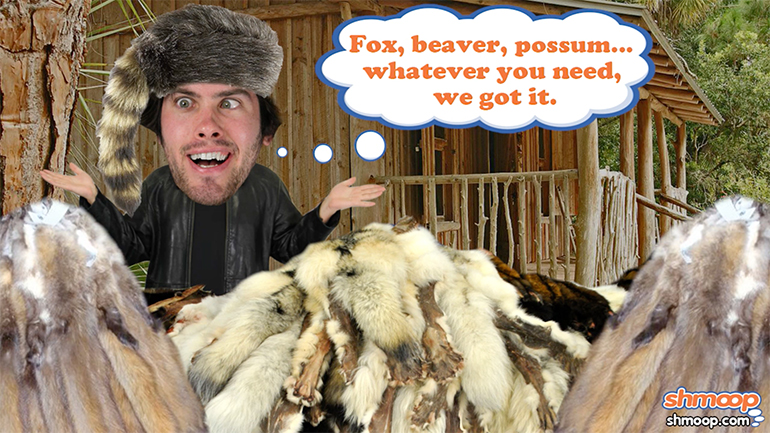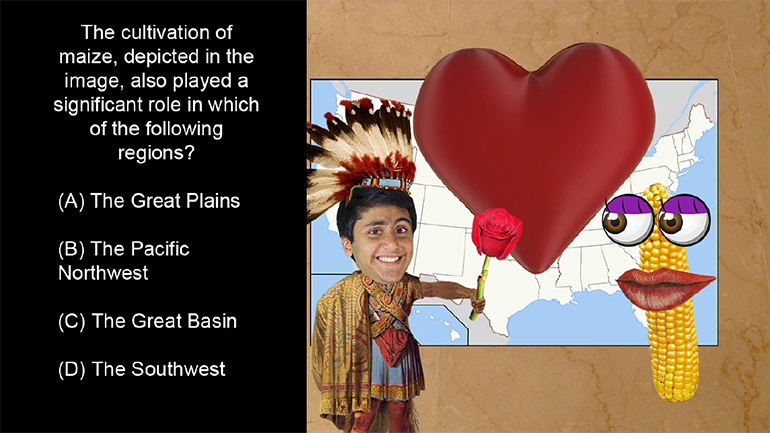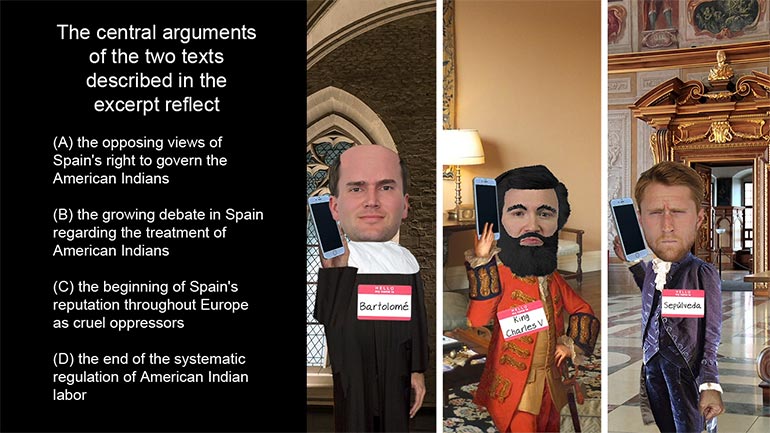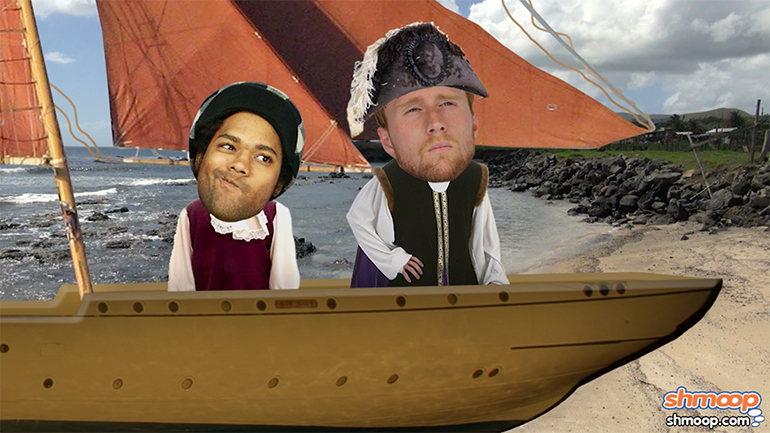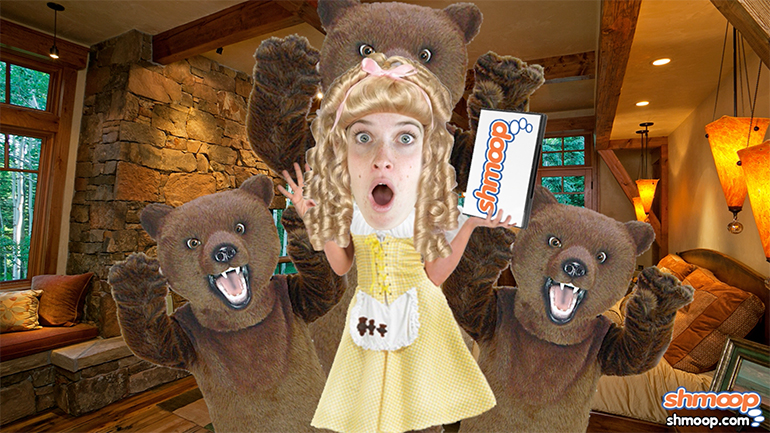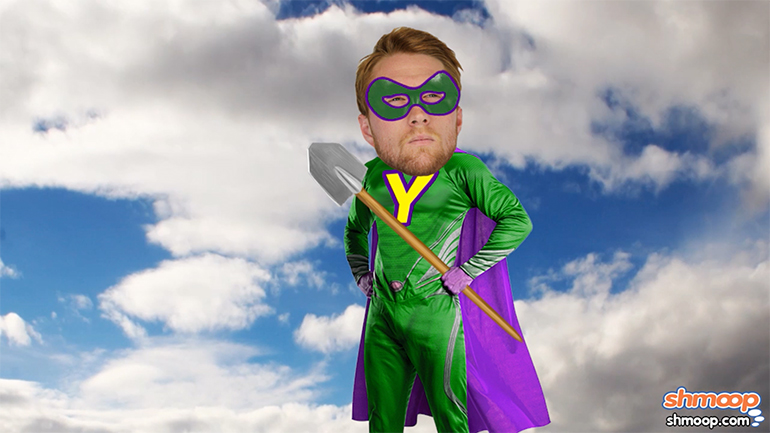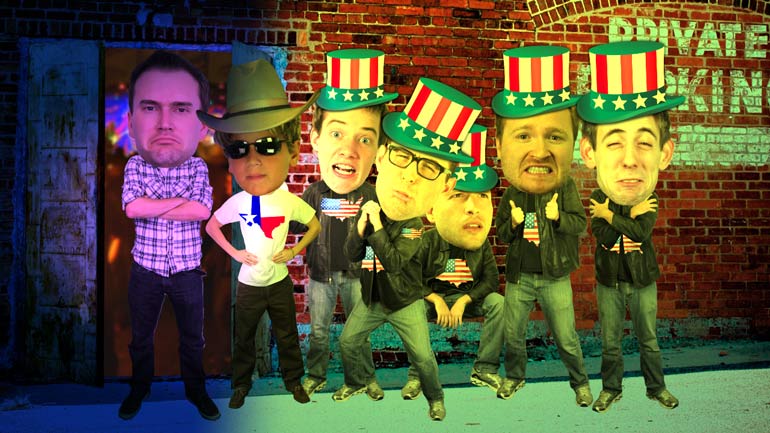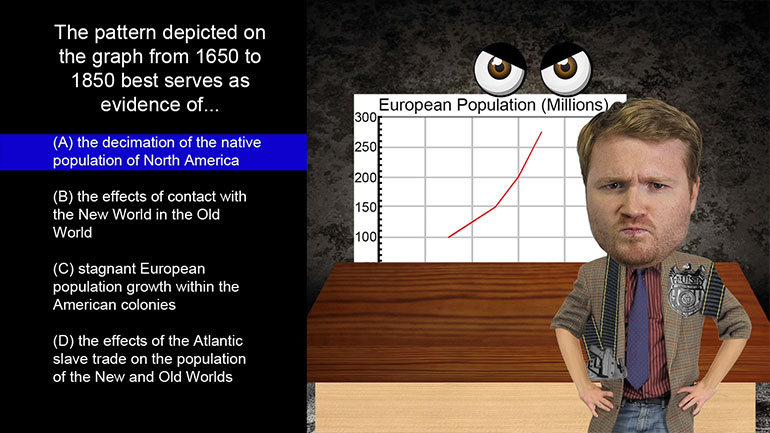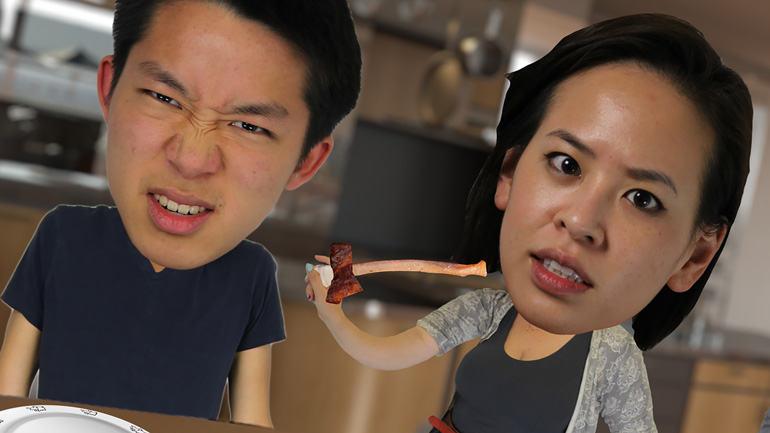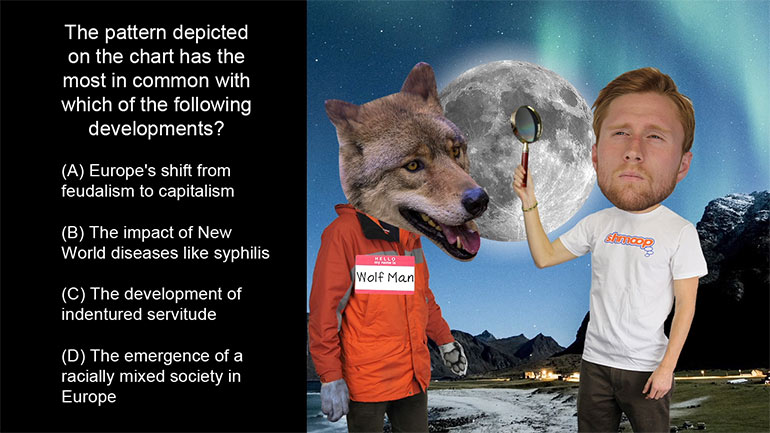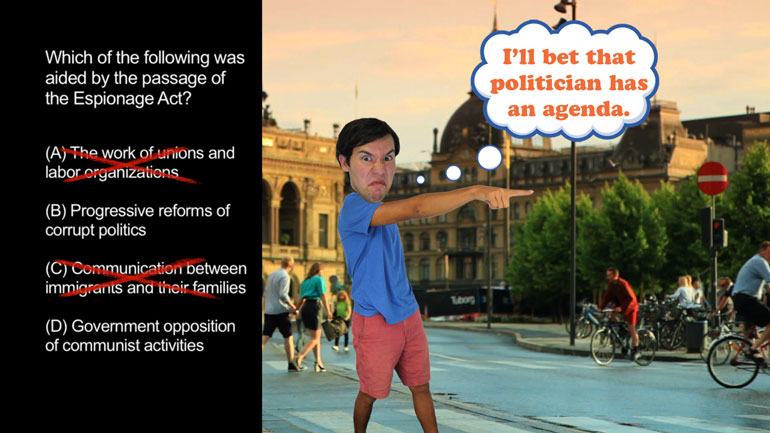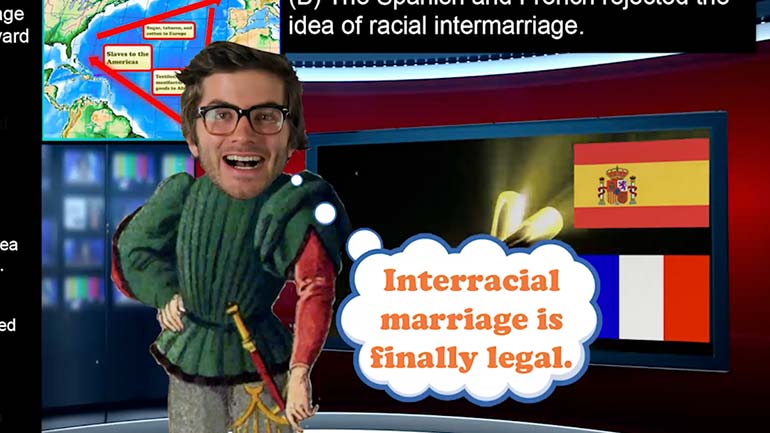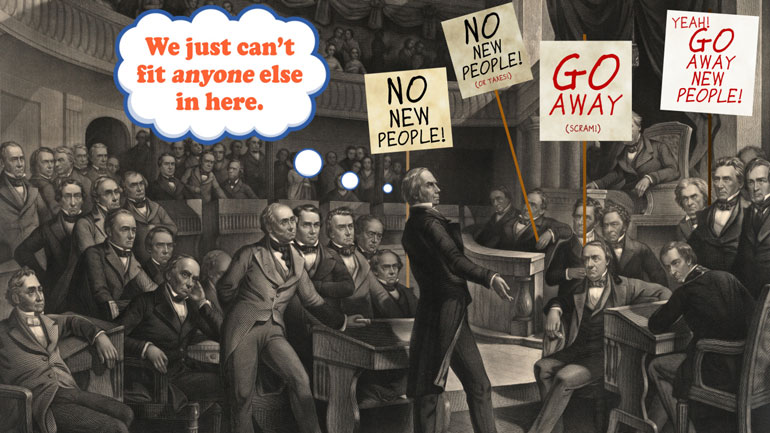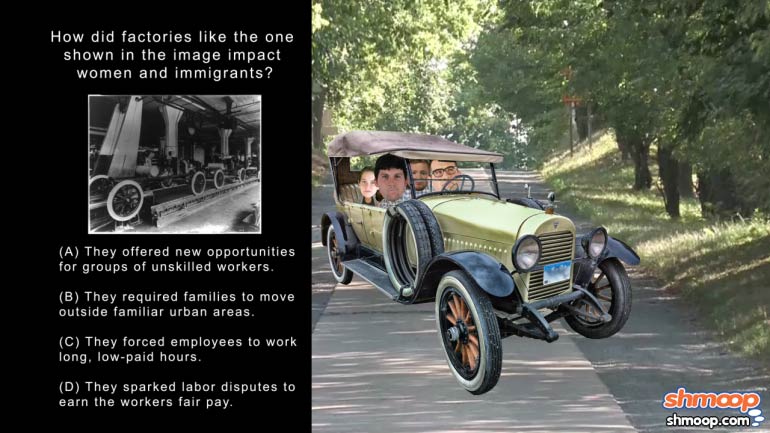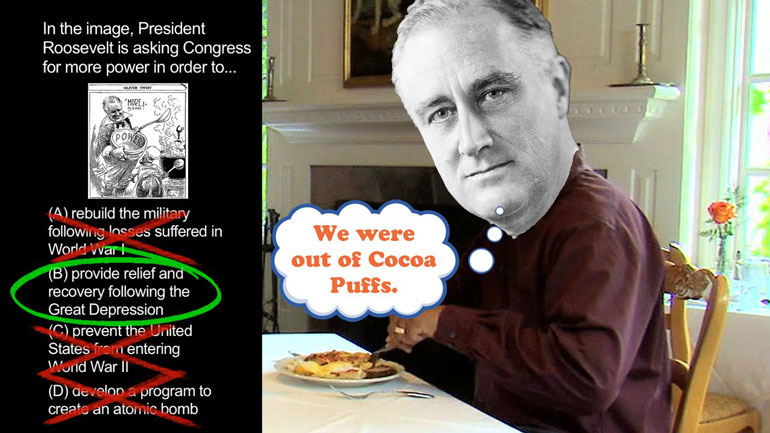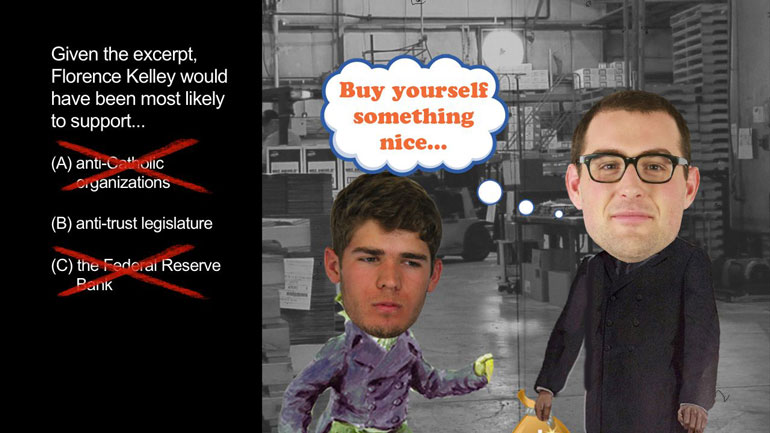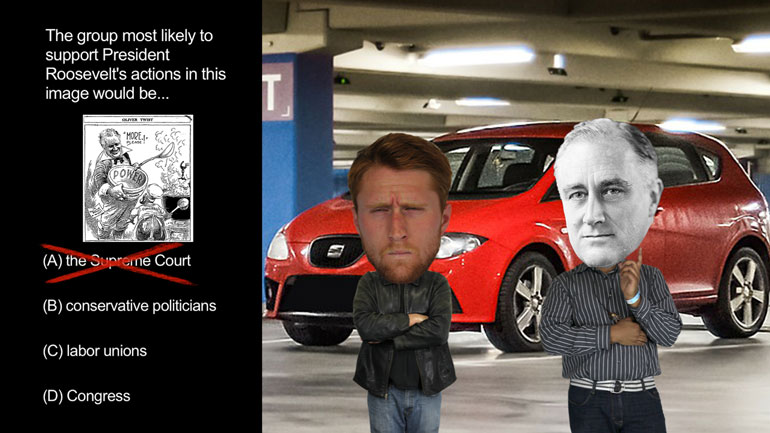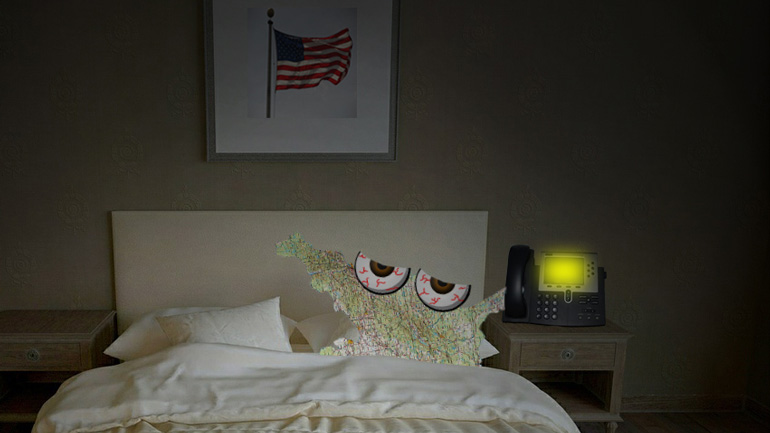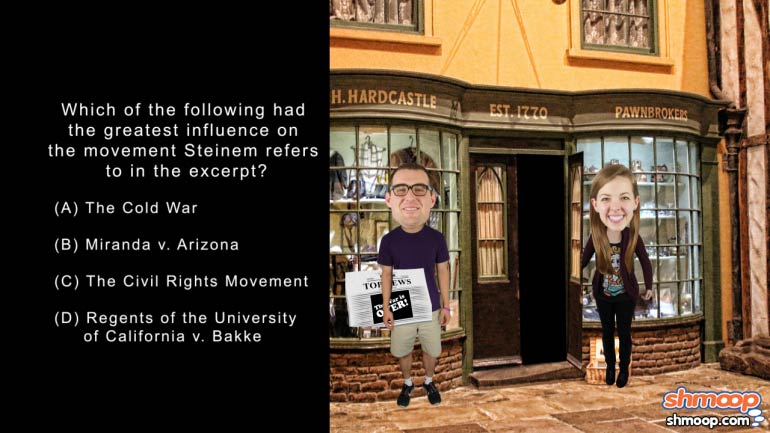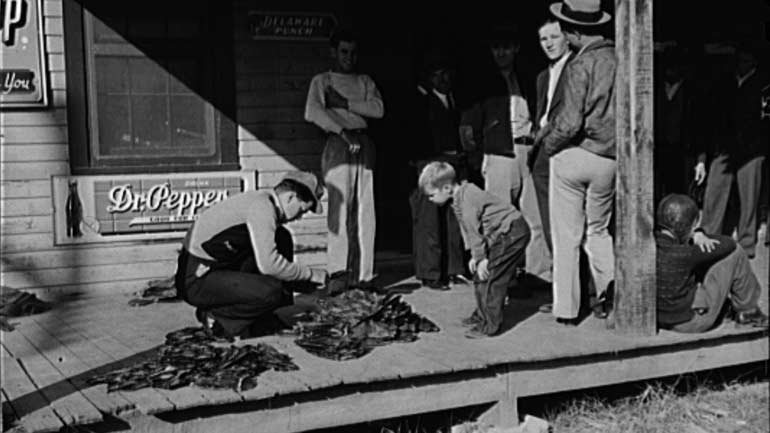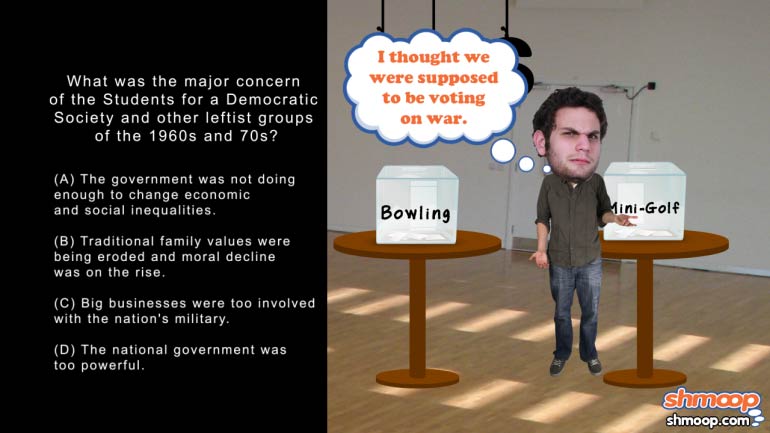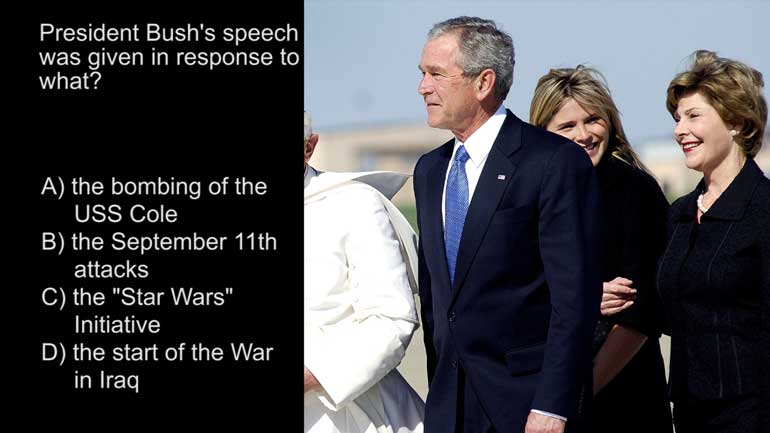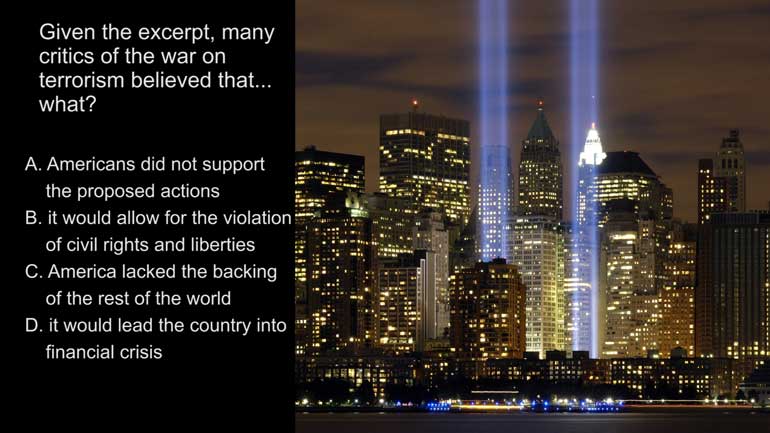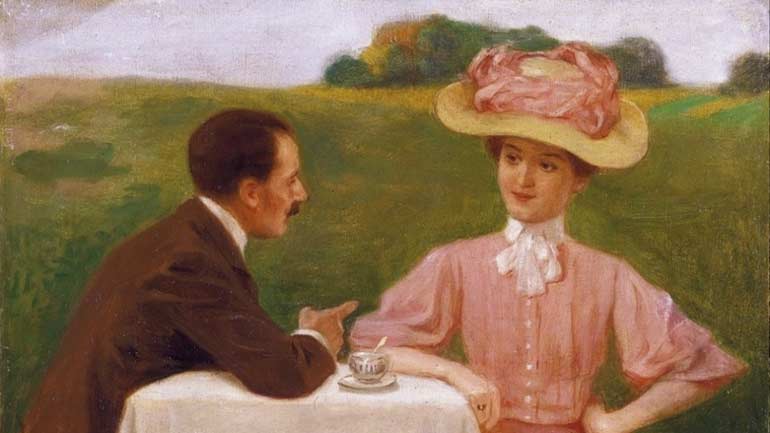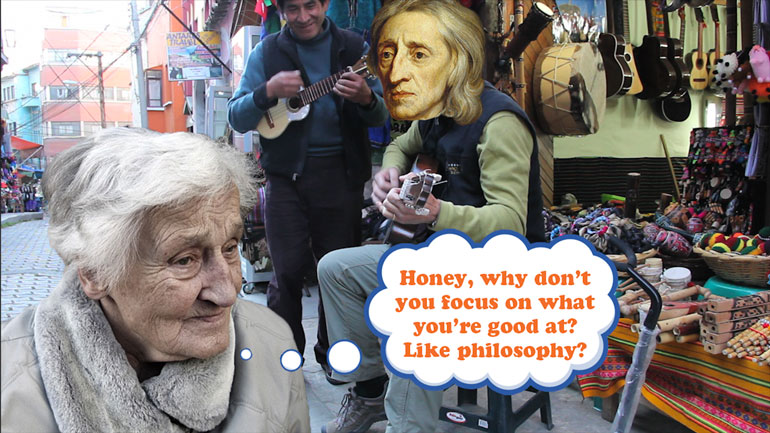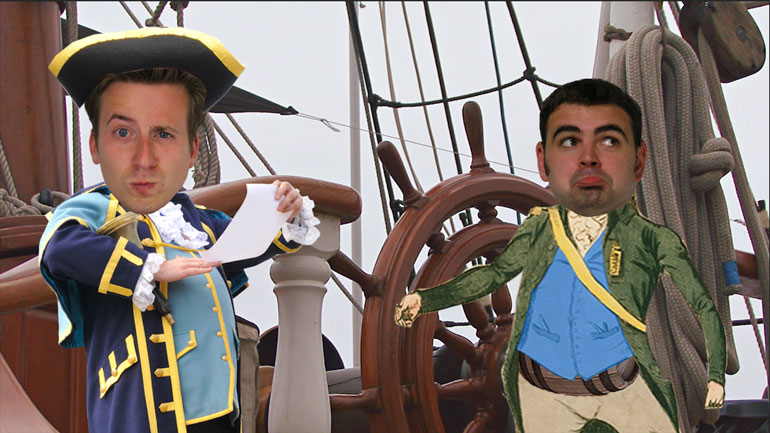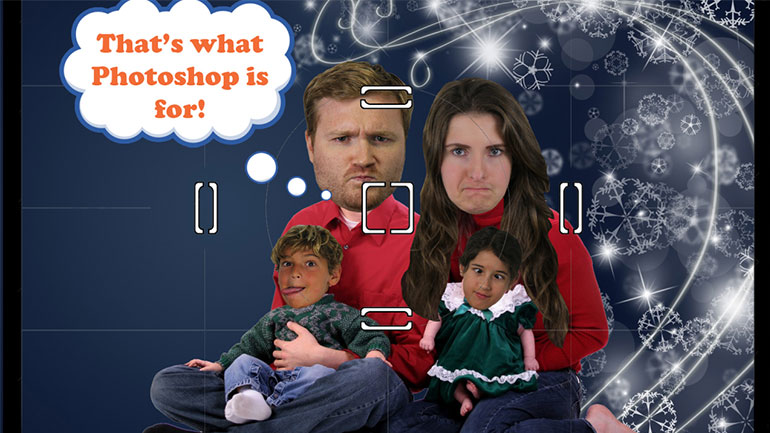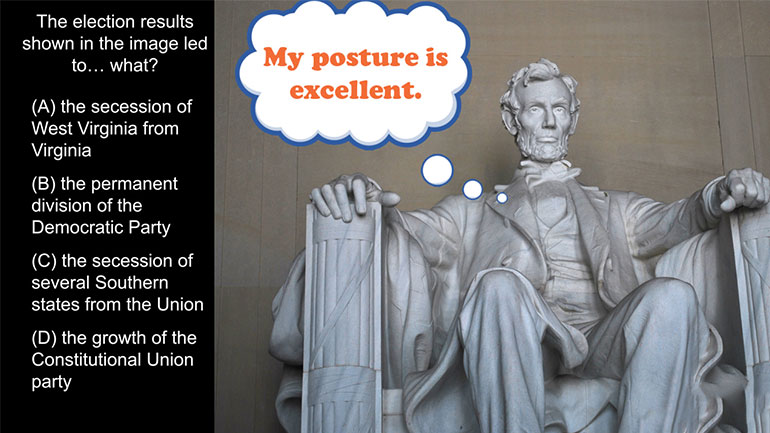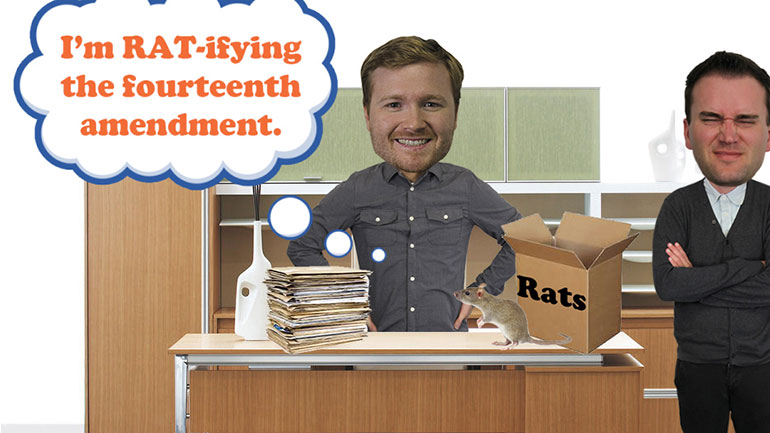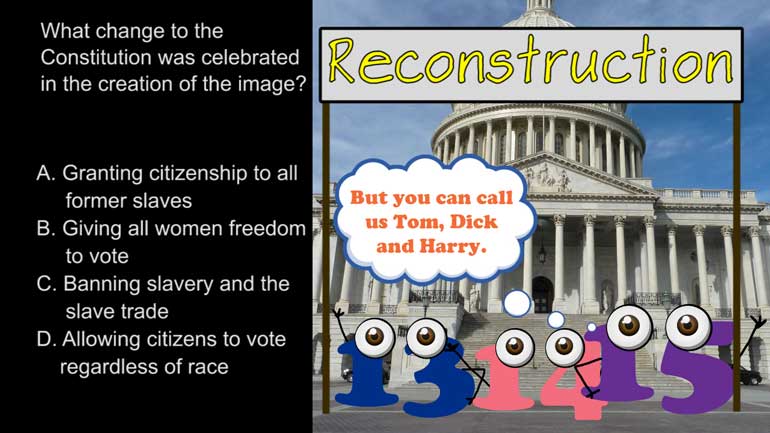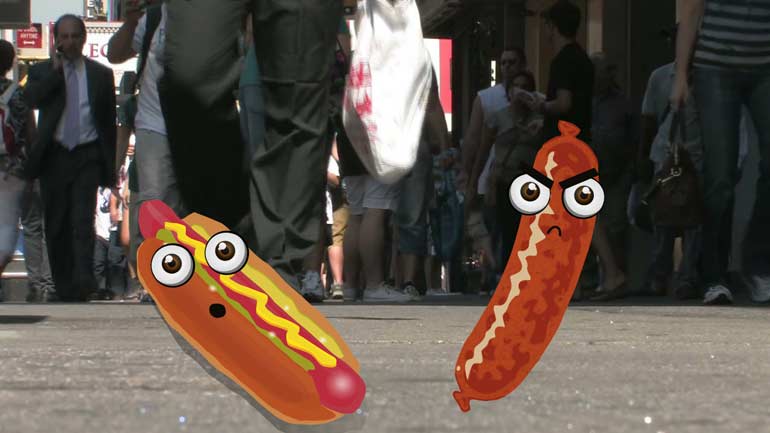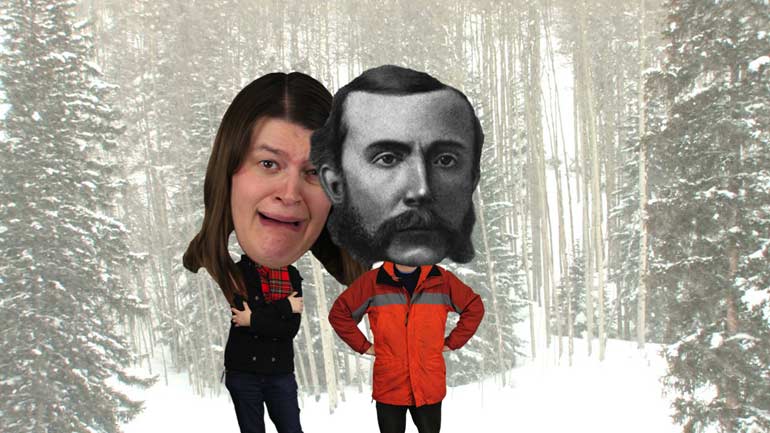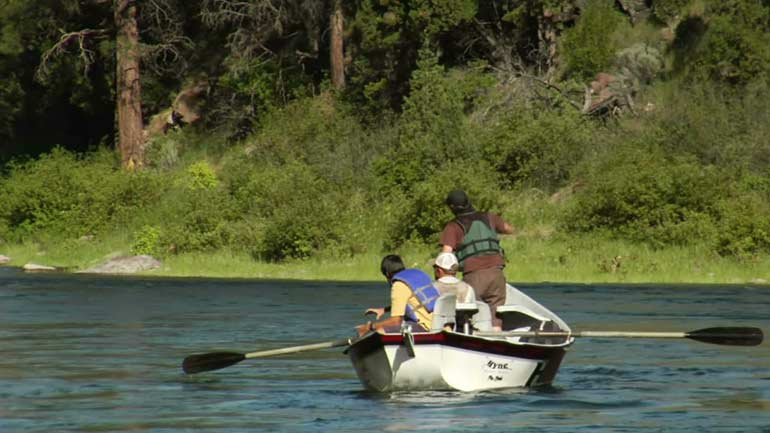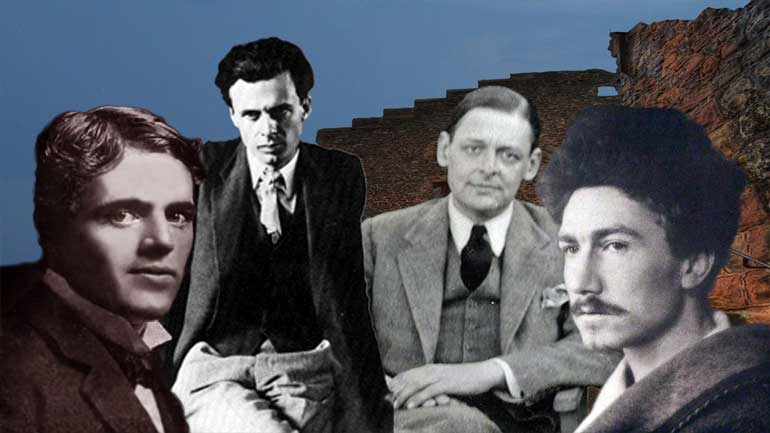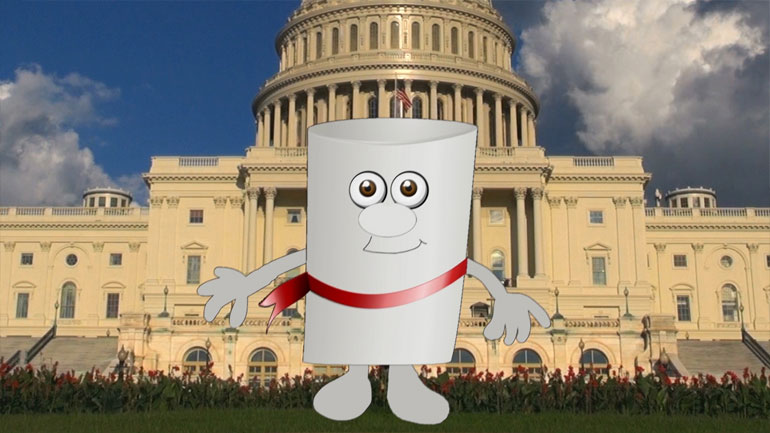ShmoopTube
Where Monty Python meets your 10th grade teacher.
Search Thousands of Shmoop Videos
AP U.S. History Videos 294 videos
AP U.S. History Exam 2.45. The journey shown on the map was an example of...what?
AP U.S. History Exam 2.26. This speech reinforced a shift in the focus of the war that Lincoln established by...what?
What did the Spanish messengers bring with them to North America? Hint: you probably wouldn't be thrilled to get this for your next birthday.
AP U.S. History Exam 1.46 174 Views
Share It!
Description:
AP U.S. History Exam 1.46. How did nonviolent civil rights organizations work to extend the decision made in the excerpt to other public spheres?
Transcript
- 00:01
We speak student!
- 00:04
And here's your Shmoop du jour, brought to you by the public sphere,
- 00:07
an orb that really gets around.
- 00:10
[ rimshot ]
- 00:11
All right, first up, the excerpt.
Full Transcript
- 00:13
[ mumbles ]
- 00:17
[ mumbling continues ] Brown v. Board.
- 00:21
And now the question:
- 00:22
How did nonviolent civil rights organizations work
- 00:25
to extend the decision made in the excerpt
- 00:28
to other public spheres?
- 00:30
And here are your potential answers.
- 00:32
[ mumbles ]
- 00:36
Okay, well, in Brown versus the Board of Education,
- 00:38
the Supreme Court finally took steps
- 00:41
to desegregate schools,
- 00:43
but the rest of the public sphere was left
- 00:45
relatively untouched.
- 00:47
Let's see how these nonviolent civil rights organizations packed
- 00:50
a punch without the punch
- 00:52
outside the classroom. All right.
- 00:55
Did nonviolent civil rights organizations extend the
- 00:57
Brown v. Board of Education decision A -
- 01:00
by adopting the philosophies of Booker T. Washington?
- 01:03
Huh. Hmm.
- 01:04
Well, one of Booker T. Washington's main philosophies was
- 01:07
avoiding confrontation over segregation,
- 01:10
and these groups wanted very much to draw attention to that
- 01:13
ugly societal institution. So it's not A.
- 01:17
Did these nonviolent groups attempt to spread
- 01:19
desegregation C -
- 01:21
by encouraging African Americans to use self-defense?
- 01:26
Well, some in the civil rights movement -
- 01:28
most notably supporters of Black Nationalism -
- 01:30
believed that African Americans had a right to fight
- 01:33
violence with violence. Nonviolent groups, however, felt
- 01:36
quite the opposite. So that's a strike against C and D.
- 01:40
Which means nonviolent civil rights groups worked
- 01:43
to extend desegregation to other public spheres
- 01:46
B - by boycotting the use of segregated facilities.
- 01:49
Well, to combat the inequality of segregated spaces
- 01:52
in a nonviolent way, civil rights groups
- 01:54
focused on organizing boycotts of segregated facilities,
- 01:58
particularly those connected to transportation and service.
- 02:01
So B is the right answer.
- 02:04
One major tactic of the boycotts was called a sit-in,
- 02:07
which involved activists taking a seat at a restaurant
- 02:10
that refused to serve them.
- 02:12
We just hope they didn't sit in the food. That would've been low.
- 02:16
[ shouting ]
Related Videos
Ever heard of a "living document"? They eat and breathe just like the rest of us! They even walk around on their own two legs. Okay, fine—maybe t...
If the Puritans had gotten their way, religion would play a much larger role in lawmaking these days. Want to know more? Watch the video for all th...
What happened between the creation of the Articles of Confederation and the ratification of the current U.S. Constitution? This video analyzes the...
The Modernists thought the world had a lot of problems, and they were intent on fixing them—or at least talking about fixing them. Unfortunately,...
This video explains Federalism and the quest for a fair balance between state and national power. It covers the progression and compromises of Fede...

